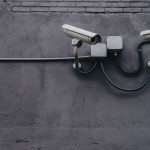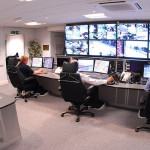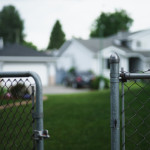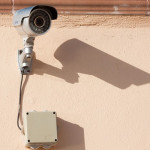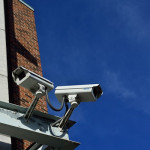Low-Light Security Cameras
There’s something to be said about low-light security cameras. Because lighting conditions in different environments are not always ideal for surveillance, low-light security cameras enable us to capture respectable footage in these situations. And with new technology, the quality of low-light camera images has vastly improved.
But before you invest in low-light security cameras for your home or business, here are some important facts and tips to know to make the most of your security systems.
Here’s some important information in order to make the most of your security systems.
First and foremost, you should know the related terms you may come across:
- Low-Light
- Day/Night
- Starlight
- SenseUp
- Night Vision
- Light Finder
- Light Toucher
- Dark Finder
- Light Catcher
- Thermal Imaging
All of these terms refer to the same classification of surveillance cameras. And while some of these terms are trademarked by manufacturers, the most commonly used terms for these cameras are “low-light” and “day/night.”
How It Works
Despite the sometimes confusing terminology, the basic components remain the same for all low-light cameras: a lens and sensor and some level of image processing. And to be clear, low-light cameras are different than thermal cameras (which track heat rather than motion or images) or cameras with IR illuminators.
A majority of low-light cameras use an IR cut filter, which is a mechanical filter that sits between the lens and the sensor (CMOS chip). The name is derived from its ability to “cut out” or filter out IR illumination during the day to improve color quality. At night, as available light diminishes, it slides out of the way to allow more light to get the sensor, thus improving low-light video quality. In order to help the video quality, it is also captured in black and white. In most cameras the filter is mechanically driven by an algorithm, however, some cameras allow manual control.
Optics
Because nearly all the cameras contain IR cut filters, it comes down to the lens and the processing to set these items apart from one another. The lens transmits light to the sensor and then the data on the sensor is processed by a processor. The variance among cameras is often in the optics. You want to be sure that both the lens and the sensor are of great quality, otherwise the potential for stellar images will be wasted.
Processing
Aside from the optics, processing is an important factor in determining the best low-light camera for you. Most manufacturers employ the same OEM processor yet make their own adjustments to them. The ability to control the tuning of an image is crucial as the tuning of an image during daylight will likely not hold up at night or in complete darkness.
Pay close attention to image toning, noise suppression, and the ability to maintain color and contrast in low light as these often differentiate one camera from another.
Lux
Typical IR cameras will capture images between 1 lux and 0.1 lux, however, the latest technologies can allow .01 lux to 0.00001 lux. This means that what would have been a completely black image a few years ago now looks like a near-daytime picture thanks to new low- and ultralow-light sensors.
While this achievement is impressive, in reality, there will rarely be any situations where there is complete darkness. Some ambient light will likely be present, whether it is from street lamps, the moon, or even the stars.
Spec Sheets Vs. Live Demo
As discussed, the impressive low-light sensitivity and lux will likely be included in the spec sheets, along with other important features. However, these spec sheets often represent technical specifications as opposed to actual performance.
Instead of simply relying on spec sheets, try to find a manufacturer or company that will provide you with a live demo and comparisons. This will give you a better idea of the low-light camera’s performance and whether or not it lives up to your requirements. In addition, third party reviews can give you more insight as well.
Resolution
Just because a camera boasts a high megapixel count does not necessarily mean it will produce a better low-light image. With higher resolution and higher megapixels, each pixel becomes a smaller percentage of that sensor. For example, image the sensor has a fixed size, yet the resolution is doubled. The pixels are smaller, thus, the sensor for each pixel is also smaller, increasing the amount of sensitivity needed to maintain the same level of quality.
Lens Speed
The speed of the lens is important and investing in a fast lens and better optics is crucial. The lens determines what information reaches the sensor, and, because of this, you get what you pay for when it comes to lenses and optics.
Positioning & Distance
Proper positioning of your security cameras is critical. Focus on what you want to capture and the level of detail you need when choosing the location of your cameras.
Position surveillance cameras so that the common range of motion is moving across the field of view rather than having common movement coming toward the camera. Also, avoid bright light pointing directly at the lens – this can cause flare or “fog” on the image.
Consider the field of view in terms of distance. The level of detail from the camera is highly dictated by how close the camera is and how much it’s zoomed in.
And when it comes to distance, you want the right combination of lens and camera that factors in the distance from the area you are trying to monitor. If you need to detect motion from long distances, your best bet would be to switch to thermal cameras. Activity will be detected, however, it will be harder to determine whether it is a person or an animal.
Share your own knowledge of low-light surveillance cameras with us and your peers on Facebook, Google+, Twitter, LinkedIn, and Pinterest. To shop our selection of quality CCTV surveillance systems and security cameras, please visit SecurityCamExpert.com or call 888-203-6294 today!
Why You Should Invest In Business Surveillance Systems
As the New Year approaches, you may resolve to invest in a better business security camera system. Increasing your security measures can provide numerous benefits and will likely pay off in the long run. Here are a few ways a security system can help improve your business.
- Increase Customer And Business Safety
The presence of security cameras not only helps to deter burglars from targeting your business, but it can also bring peace of mind to your customers and employees.
- Reduce False Claims
There have been instances where employees fake an injury to claim worker’s comp, as well as customers who may make false claims against the business or employees. Security cameras can prevent these instances or provide evidence to refute these claims.
- Minimize Employee Theft
Security cameras and surveillance can positively influence behavior, resulting in employees complying with company policies.
- Avoid Loitering Around Premises
You not only want to secure the inside of your business, but protecting the perimeter is just as important. Loitering may send the wrong message to your customers, and may negatively affect your business.
- Prevent Site Littering
Aside from loitering, litter scattered around your business can damage the business reputation. You want to maintain an appealing look for your customers, and excessive litter can be detrimental.
- Replace Full-Time Security Guards
Rather than having a security guard on the grounds, you can actively monitor your premises from within or remotely.
- Track Business Traffic
Keeping track of your business traffic can improve your business success. You can identify the busiest hours and adjust your staffing accordingly. It may also give you insight to the most efficient business hours for your location.
- Tie multiple locations into one surveillance system.
If you have more than one location to monitor, an advanced security system will allow you to connect the different security systems. That way, you may be able to remotely monitor all sites from one app or system.
If you need help finding the right security camera system for your business, feel free to visit us online at SecurityCamExpert.com or call 888-203-6294 to speak with a representative. You can also connect with us on Facebook, Google+, Twitter, LinkedIn, and Pinterest.
Night Vision Cameras Vs. Thermal Cameras: Which Is Better For You?
When it comes to securing the perimeter of your home or business, you want a surveillance system that can perform in various conditions. For 24-hour monitoring, night vision cameras have been the popular solution. However, the emergence of thermal cameras has provided a more advanced solution. Learn more about the different types of night vision cameras and how thermal cameras differ from them.
Low-Light Cameras
These are also known as day and night cameras and electronically and automatically adjust lighting capture settings based on the time of day to produce optimal video images. During the day, IR cut filters are used to “cut out” IR illumination, allowing for color images. At night, the filter is removed entirely to allow the maximum amount of visible and IR light to reach the sensor and produce a monochrome image. The downside to these cameras is that they are completely dependent on lighting conditions. That is, too much light or no light at all will result in unusable images. Thus, the amount of visible light available drastically affects the image.
IR Cameras
IR cameras have a lens that is surrounded by LEDs which emit a beam of near-infrared energy to bounce off objects in its field of view. The image sensor is then able to create a picture; however, distance plays a crucial role in performance. Because the reflected IR light can only reach so far, these cameras are often limited to short-range applications.
Night Vision Cameras
Night vision goggles (NVG) and cameras capture visible light photons. As the photons penetrate a photocathode tube (which acts as an image intensifier), they are converted to amplified electrons that pass through a phosphorous screen and converts them back to visible light to create a picture (often in a greenish hue). Because these devices need just the right amount of visible light to function, they are virtually useless when there is ample light outside (ex. twilight) or in conditions where light is blocked (ex. smoke) or no light is available.
Thermal Cameras
Rather than performing based on light availability, these cameras produce video surveillance images based on the measurement of the electromagnetic heat radiation emitted by all objects and individuals. Their performance is unaffected by bright lights, complete darkness, foliage, and light fog. No matter how small, differences in heat are picked up and produce images with high contrast, which are essential to the success of video analytics and intrusion detection. These cameras may be better suited for properties which require strict perimeter security (ex. oil and gas industries, data centers, mines, power stations), and are often combined with other layers of protection (ex. fence sensors, microwaves, PTZ cameras).
Thermal cameras also boast long-range detection capabilities, thus, reducing the number of cameras needed. They can also be a good substitute for fences where fence installation is not possible. For example, ports and oil refineries have acres of water and land to secure and monitor. Thermal imaging and video analytics can create “virtual fence” and can be a more feasible and affordable solution than installing a physical barrier.
Do you use night vision cameras or thermal cameras to protect your property? Share with us on Facebook, Google+, Twitter, LinkedIn, and Pinterest.
If you need help deciding which night vision or other security cameras will best suit your surveillance needs, please feel free to contact us at 888-203-6294 or visit SecurityCamExpert.com today!
Why You Need IP Security Cameras
Security camera systems have made great advances over the years. From traditional analog CCTV technology to IP networking, security camera quality and features have improved to provide better monitoring and security. Some of these enhanced benefits include higher resolutions resulting in clearer images, fewer cameras covering larger areas, and thus, a lower total cost of ownership. Many businesses and homeowners are opting to trade up to network IP security cameras, network video recorders (NVRs) and cloud-based storage for more convenient and affordable security.
Network IP Cameras & Assisted Living Communities
Aside from protecting homes and company headquarters, assisted living communities can also reap the benefits of installing network IP security cameras.
In the way that security cameras deter burglars from targeting your property, in assisted living facilities, the aim is to deter abuse and neglect. By strategically placing these cameras in and around the facility, family members can put their worries at ease by reviewing stored footage to ensure that no mistreatment is taking place and that the staff is providing the proper care. For facility managers, video surveillance footage can provide evidence should an employee or resident be charged with abusive behavior.
Network IP cameras can also help the staff keep a closer eye on residents or patients. For those residents at risk for falls, staff can potentially prevent falls and injuries, or respond faster to those incidents. Medical equipment such as oxygen tubes may get dislodged, and staff can get to the rooms faster to fix the problems. In the case of memory units, the entrances and exits can be closely monitored to prevent residents from wandering outside of supervised areas, and can help protect the facility from possible intruders.
These security cameras can also prevent employee theft. Although we would rather think that this is uncommon, it is not unheard of for residents to report their belongings stolen. Whether these claims are accurate or not, cameras provide evidence to prove what really happened. Also, facilities often find that supplies may go missing. To counter these losses, IP cameras can document the incident or prevent it from occurring in the first place.
Of course, opponents of these security measures stand firm in their belief that it makes it more difficult to recruit staff and that employees will have trouble making sound decisions for fear of families challenging their actions. The problem with this stance is that numerous other careers and industries are under constant surveillance with little to no issues arising. Proponents of employee surveillance believe these measures will help workers to make better decisions and avoid any questionable situations.
Why Should You Upgrade To IP Security Cameras?
As stated, upgrading to IP security cameras comes with a myriad of enhanced benefits. Aside from the obvious video quality improvement, IP cameras are able to utilize your existing CAT5 or CAT6 Ethernet cabling, saving time and money on installation. The intelligent video features include facial recognition, motion detection, audio detection and people-counting, to name a few. Also, because they are connected to the Internet, owners are able to remotely view live video, search archived footage, and receive alerts via any PC, tablet, or smart phone.
Choosing the Right IP Security Camera
Because the various IP camera choices on the market, it can be a bit overwhelming. Here are some important features you should know about before choosing the best IP cameras for your needs.
- Camera Types
There are three design options for IP cameras: bullet, dome and PTZ (Pan, Tilt, Zoom). As inferred by their name, bullet cameras resemble a bullet shaped and best suited for directional monitoring. They typically do not possess the capability to zoom in or move. Dome cameras are shaped like domes and ambiguously monitor areas, aiding in its role of deterring misconduct. “Speed domes” spin quickly to capture a broader range of images. Lastly, PTZ cameras are ideal for covering large areas. These cameras can move and capture different angles, thus, delivering the work of several fixed-point cameras in one single device. PTZ surveillance cameras may also be preprogrammed to scan an area or may be controlled remotely.
- Resolution
IP camera resolution is the amount of visual data that can be captured and is measured in megapixels. It is often provided in horizontal and vertical pixel dimensions (ex. A camera that has 1280 x 1024 resolution is 1.3MP because 1280 x 1024 = 1,310,720 or 1.3MP). A higher resolution means the camera can capture more data, resulting in improved video clarity.
- Power over Ethernet (PoE)
This allows you to transmit power over the data cable, which can run up to 100 feet. This will save you money and decrease installation limitations. In addition, the PoE standard 802.3af supports higher power ratings needed for motorized cameras (ex. PTZ).
- Wide Dynamic Range
If you are monitoring an area that has challenging lighting conditions, you will want a camera that has good wide dynamic range (WDR). This will control the backlight and remove shadows to produce adequate footage in difficult environments.
- IR LED
Infrared (IR) LED lighting is like night vision, allowing cameras to capture clear footage in low to no light conditions. IP cameras can see infrared light and when wavelengths reflect back, it is as if the room is illuminated and the camera can record video. Night vision capabilities improve with more IRLEDs and longer ranges.
- Weather/Vandal Resistance
If you are using your surveillance cameras outdoors, be sure to choose weatherproof and “vandal resistant” cameras, which will often be IP66 rated and IK10 rated respectively. This will safeguard against water or dirt, which can interfere with your recordings or damage your equipment. Some cameras even offer thermostatic controls, which will help to prevent condensation forming over the lens.
When upgrading to IP cameras within your home, business, or in assisted living communities, be sure to evaluate your needs and review your options before making a final decision. If you need assistance, please feel free to call us at 888-203-6294 to speak with a representative and request a free quote. You may also visit SecurityCamExpert.com to browse our inventory of network IP cameras and surveillance equipment.
Connect with us on Facebook, Google+, Twitter, LinkedIn, and Pinterest for the latest news and updates!
Artificial Intelligence For Video Surveillance
There’s no denying that video surveillance technology has come a long way over the years. From grainy videos in its early stages to the quality software and clarity today, video surveillance continues to make great strides and advancements.
History
The goal of security cameras and surveillance systems is to capture, detect, and deter any unlawful behavior in and around homes, businesses, and public areas. Before, installing a security camera system was a costly and laborious job, involving lots of wires and cables running throughout the building. As technology progressed, security cameras became more accessible and affordable, allowing more users the opportunity to invest in their security. Now there are numerous DIY solutions that make it easy for homeowners to install and set up on their own security systems.
For businesses, implementing a team of people to actively monitor security cameras at all times was once the only option. Now, much of the monitoring aspect of security and surveillance systems can be automated. Rather than having the mundane task of watching numerous monitors, security cameras now have the ability to detect any suspicious or abnormal behaviors and will alert a security officer as necessary.
While we have seen the security industry flourish over the years, this is just the tip of the iceberg. Our technology will continue to advance and amaze us in ways we never thought possible.
Artificial Intelligence
Artificial intelligence (AI) in video surveillance enables the “smart” features we now see with security cameras. In general, security cameras enable us to monitor situations in real-time or go back to review previous footage. With the integration of AI technology, not only can we monitor in real-time, but potential issues can be identified before they become real problems.
With the emergence of video analytics, footage can be analyzed immediately to identify any abnormal activity or threats early on. This technology helps the software ‘learn’ what is normal in order to identify unusual behavior and is meant to make up for human error, rather than replace human monitoring all together.
While it was always a goal to integrate AI and video surveillance, the technology, from a hardware standpoint, was not ready. One of the issues that needed to be addressed was decreasing the power demand to a level low enough that would allow the technology to be embedded into the cameras.
As more cameras emerge with new AI technologies and processes, we will begin to see more advanced features including crowd density monitoring, facial recognition, stereoscopic vision, and behavior analysis.
Behavior analysis in particular is what a lot of tech companies are focusing on. By implementing a technology that can identify and recognize precursor patterns associated with crimes and other bad behavior, we may be able to greatly improve public safety and security.
A great example comes from the West Japan Railway, where it was found that 60% of people hit by trains in Japan were intoxicated. They have now installed security cameras that can automatically search for and detect signs of intoxication. Sleeping on benches, stumbling, falling, or standing motionless for long periods of time are behaviors that are recognized by the AI system. Human attendees are then notified and sent to check on the person.
Of course, a conversation about video surveillance always includes concerns about privacy. No one wants to feel like they are constantly being monitored, but developers insist that these systems know when to stop collecting information and monitoring. As these technologies continue to develop, you may soon be able to “teach” your system when to record and in which situations recording should halt.
Although it is still in its early stages, AI technology and video surveillance is heading in a positive and exciting direction. Mass adoption may still be a ways to go, but it’s great to see AI being applied in a new setting.
What are your thoughts on artificial intelligence and the video surveillance industry? Share with us on Facebook, Google+, Twitter, LinkedIn, and Pinterest. Browse our selection of security cameras and equipment online at SecurityCamExpert.com. To learn more about our installation services or to request a free quote, please call 888-203-6294.
Indoor Security Tips
Security cameras placed outdoors allow you to monitor your property while acting as a deterrent for trespassing. But what happens if criminals proceed anyways?
Indoor security cameras will show you what happens when the intruders get in. Should theft or damage occur, you are left with video evidence of the crimes to assist in capturing the criminals.
For everyday use, indoor security cameras help to monitor daily activities, such as kids returning home from school, or checking in on pets while you’re at work.
While there are several benefits of indoor cameras, it may be difficult discerning the most effective places to install them. Here are some helpful tips for choosing the best locations for your indoor security cameras.
Statistics show that the most common entry points for burglars are through first-floor doors or windows, thus, your main entrances should be your top priorities. The front door, back door, garage door, and other first-floor exterior doors and windows should be equipped with some type of security (ex. locks). If possible, installing security cameras to cover all of these spots would be ideal.
- One of the most common places for an indoor security camera is in a high traffic area that provides coverage for as many areas as possible. Try to find the right angle and placement for a camera that will give a bird’s eye view of the larger area. For example, the family room may have views of the kitchen, back door, garage door entrance, and possibly even the front door.
- For larger homes or homes with a second or third story, additional security cameras may be necessary to sufficiently cover the interior of the home. Expansive one story homes may need multiple cameras to cover different rooms and entrances, while multiple story homes may need more cameras to cover each level.
- If an extensive security camera system does not fit within your budget, choose key areas that are highly targeted by burglars and install cameras there. For example, the family room often houses expensive televisions and electronics. Or if you have a family safe, you can place a camera in that room for added security.
- Once you have chosen the locations for your cameras, be sure to install them out of reach. Not only will this help to get a better view, but it will also help to prevent any damage of theft. If your security cameras are easily accessible, burglars may destroy them to eliminate evidence, or possibly steal them.
Share your indoor security camera tips with us on Facebook, Google+, Twitter, LinkedIn, and Pinterest today!
For a great selection on indoor security cameras and more, visit SecurityCamExpert.com. For more information on site surveys and our installation services, please call 888-203-6294.
Perimeter Security
Whether you are securing your home or business, perimeter security is often your first line of defense. Aside from the exterior of the structure, perimeter security creates boundaries to keep intruders out. If you are considering perimeter security, there are numerous options available to you – here’s what you need to know.
Locks
Locks are very important to perimeter security. If you have nothing protecting your property beyond the walls of your home or building, you will need to invest in strong, sturdy locks. The most common breach would be forced entry, which simply destroys the lock to gain access. To safeguard against this, you want to choose locks that make use of hardened metal alloys that are as thick as possible.
Cutting attacks are common if you are using padlocks on your gates. Aside from the shackles of the locks, the hasp or chain being secured by the padlock may also be targeted for cutting. If these are weaker than the lock, the strength of the lock will not matter.
When it comes to covert entry, bump keys are more of a concern than lock picking, as the latter wastes time and effort. The internal complexity for locks will help increase perimeter security and prevent unauthorized key duplication.
Walls
Unlike a fence, walls provide more privacy as they better obstruct visibility. Higher walls mean lower visibility and a greater obstacle to gain entry. The downside is that the decreased visibility affects both sides, meaning that while outsiders may not be able to see in, you may not be able to see anyone approaching the property.
Luckily, the visibility concerns for high walls can be resolved with the use of security cameras or other forms of documentation (such as security guards). Documentation is a key consideration (which will be discussed further), but it is not always feasible for some.
In the end, it all comes down to the intention of your perimeter security. With a wall, you get more privacy and a sturdy barrier which allows you to put more focus on securing the gate.
Fencing
Fences offer extreme flexibility in that the price, look, and functionality have the most range. You can adjust the visibility by choosing different designs and even growing ivy or other plants around it. In extreme cases, most common fences may be easier to electrify, depending on the material of the fence.
Unless you have concerns about automotive ramming threats, the fact that a fence is weaker than a wall may be a minor detail. However, fences may be compromised at certain points, whether from vandalism or wear, thus creating entryways which defeat the purpose of perimeter security measures. Even if the openings are not wide enough for humans, you run the risk of animal infestation or pet escape.
Wood fences and chain link fences are often the most common types, and usually signify a boundary that others should not cross, or simply denote a property line. Fences alone are rarely high security, but with electrification or barbed wire, they can be somewhat intimidating.
Gates
A gate is the moving section on a gate or wall that allows entry and exit through perimeter security. Because this is usually the only point of entry and exit around the perimeter of a building, the gate will need a locking mechanism.
If you are planning on taking vehicles past the perimeter security, you may want to use a motorized track and electronic lock. For gates with less traffic or only foot traffic, choose a high-security padlock. There may also be a gate setup that allows you to use a deadbolt and or/keyed handle/knob.
For effective perimeter security, a keyed handle/knob may not be the best choice. A deadbolt provides more security, however, the strength of the deadbolt must be considered. But keep in mind, if the lock is too strong, the material of the gate may be attacked, or intruders may simply climb over.
Lighting
Perimeter security systems should always consider lighting, and one of the first things to assess is shadows. Trees, pillars and other tall obstructions will create dark shadows for criminals to lurk. With proper light, you afford yourself the ability to see criminals approaching or attempting to bypass your perimeter security.
Motion sensor lights are effective in that they focus attention and are often the choice for many residential buildings without security guards. For residents, a light turning on suddenly will often alert them of unexpected movement around the house. For those properties with high walls, or an obstructing fence, the abrupt light hopefully catches the attention of neighbors or pedestrians.
Despite drawing attention, your security depends on whether or not bystanders or neighbors intervene. Everyone has an interest in preventing crime, but if someone is unaware of the threats or the victim, people may do nothing to avoid confrontation. It may behoove you and your property to get to know your neighbors and keep a lookout for each other.
Alerts & Notification
Some people may struggle with the decision of investing in a dog or an alarm system. While getting both is definitely an option, the decision will likely come down to your ability to take care of an animal. When it comes to alarms, you will want one that offers monitored security so that authorities can be notified in case of emergency.
However, these notifications are only effective if response times are within the average time it takes to commit a break-in. If not, alerts and notifications are rather useless. A loud alarm may help to alert anyone who is around to the crime that is taking place.
If you’re looking for more discreet notifications, a smart lock with access notifications might be the solution. This allows you to know when a lock has been opened, and can be extremely helpful if you suspect any internal threats.
Documentation
Most perimeter security systems rely on security cameras. They are largely accessible and are great for capturing evidence of threats and criminal acts.
Before installing security cameras, you should know what is allowed and what is not. You must abide by the law when it comes to documentation efforts otherwise your footage will be useless and may even get you in hot water.
When choosing cameras, you should keep your security intentions in mind. If you need footage that will hold up in court, you will need the right kind of camera to record quality video in that environment. You will need to consider glare from the daylight and possibly night vision. Also, you need to consider placement as you may need multiple cameras to adequately cover your perimeter. If you have more questions regarding security cameras systems and installation, feel free to call us at 888-203-6294.
Natural Barriers
A positive natural barrier is something that offers another level of security to your property. This can be anything from the proximity to a police station to a single, long road leading to your home.
Consequently, there are also natural barriers that prevent you from taking full advantage of your possible perimeter security system. For example, a treeline on the side of your property may offer a natural border, however, it may also help intruders cover their approach. Also, motion sensor cameras and lights placed in heavy foot traffic areas may produce lots of false alarms, becoming more of a nuisance than an effective security measure.
Your best bet is to identify what works for you and what does not in terms of security. You shouldn’t invest in a method of perimeter security just to use it. Focus on the positive barriers and try to compensate for any negative barriers you cannot change.
Aesthetics
The consideration for aesthetics is to find a balance between it and your perimeter security. Rather than choosing to make the property look good and then incorporate security, you should be trying to make the security you need look good.
If you are adding to your landscape or home, you should always consider how it will affect your perimeter security. It is best to opt for something with a neutral or positive effect, not something that will be a detriment.
Access Control
Who has access to your property is a very important part of making your perimeter security work to your benefit. Key control is a good starting point (numeric codes, RFID remotes, physical keys, etc.). With codes and biometric locks, your access control management software may make it quite simple to know who is entering the property and when. If any issues arise, it is easy to simply revoke privileges.
Those who have access should be trusted individuals. You should be sure that they will not take advantage of your property and will take the necessary precautions to protect their key from being stolen or misused.
Key control for physical keys can be taken care of by investing in locks with patented keyways. This will improve your protection against most forms of covert entry, but mostly it will prevent unauthorized key duplication.
Which perimeter security methods do you find most effective? Share with us on Facebook, Google+, Twitter, LinkedIn, and Pinterest.
Visit SecurityCamExpert.com to browse our selection of quality CCTV surveillance systems and learn more about our Installation and support services.
The Progression of Video Surveillance Technologies
Over the years, video surveillance has made great improvements in regards to design, features, functionality and application. As our technologies continue to evolve, the surveillance industry is bound to grow and expand even further.
In 1996, Axis Communications introduced the first IP Camera. This was originally used for monitoring the sea for oil spills, saving their customers from having to take two flights a day. Decades later, digital cameras are now the norm, from entertainment to security purposes.
When it comes to security, because we are very visual and use our eyes more than any other senses, we tend to prefer video. This is why we see CCTV surveillance cameras nearly everywhere these days. But how can we improve it?
Video surveillance can be valuable to businesses, however, monitoring the live feed 24/7 is not very realistic. Other detection tools, such as perimeter breach or motion detection, in conjunction with an alarm or alert system helps to improve security. But, as with most things, it has its flaws. These can include problems with detecting the breach, a bad judgment call in regards to what is seen, how long the feed is monitored and the length of backtracking.
Video analytics is more prevalent these days and makes efforts to address this issue. Thanks to advancing software and artificial intelligence (AI), video analytics can determine a human from an animal, eliminating false alarms caused by a pet at home. It also eliminates human error and takes motion detection a step further, as some systems can also distinguish between a known house member and a stranger.
Business and home protection continues to advance as more security camera systems integrate video analytics along with alarms, PIR sensors, and smart recordings. And thanks to edge computing, these technologies are becoming more accessible. By performing data processing at the edge of the network, close to the source of data, edge computing ultimately optimizes system performance.
But aside from all these advancements and improvements, privacy is still an important issue. Many feel uncomfortable having cameras watching over them and having their video streamed into the cloud. But what if our security systems became so advanced that video surveillance became unnecessary?
Hypothetically, an “Optical Analytic Sensor” could use edge computing to process new, updated analytics without having to transmit video. Instead, detailed descriptions of events would serve as data, eliminating bandwidth requirements and video privacy issues. Using advanced tools and AI, this sensor device could learn how to distinguish between known users and strangers. Thus, the device could automatically grant access t authorized users, eliminated passwords, codes, pins or keys. In a commercial setting, this device could sound an alarm for any unauthorized persons while ignoring those who are allowed to be there.
Again, this is all hypothetical and we may be years away from such an advanced and sophisticated system, but this shows how video analytics have the potential of enhancing various security applications.
What do you think the future holds for video analytics and surveillance technology? Share your predictions and thoughts with us on Facebook, Google+, Twitter, LinkedIn and Pinterest.
Visit SecurityCamExpert.com to shop our stock of security cameras, DVRs, NVRs, and more. If you have any questions, please call us at 1-888-293-6294 and our team will be happy to assist you.
The Importance Of Business Security Systems
Unfortunately, for many businesses, physical security is often overlooked. Some may have budget concerns while others may simply be too busy running their business. Sometimes it takes an actual incident for businesses to consider installing a security system.
Whatever the excuse, security should never be dismissed; it should be considered from the very beginning. As much as we would like to believe our chances of being targeted are slim, the truth is it happens more than we would like to admit. And thanks to advanced technology and increased demand, there are a variety of security solutions to suit different budgets and needs.
Here are some of the ways your business can benefit from a solid security system.
Deter Criminal Activity
This is obviously one of the most important reasons businesses look into security solutions. The presence of security cameras tends to discourage criminals for fear of being caught. In turn, they much prefer businesses which do not have proper surveillance systems in place.
In addition, security systems enable businesses to act quickly in notifying authorities when incidents do occur, helping to de-escalate the situation faster.
Protect Your Business Assets
Regardless of your company’s insurance policy, the loss of certain assets can still be devastating. For example, if your customers’ data is stolen, the repercussions could be extremely damaging and irreversible. Security systems come into play to secure assets which cannot be accounted for via insurance payouts.
Enhance Employee Safety
Employee safety is important, and security systems can help to protect and reassure your workers. For those who work late shifts, odd hours, or are often alone on the premises, security cameras can offer peace of mind. Should an accident or dangerous incident occur during this time, an advanced security system would be able to send out an alert and provide evidence as needed.
You will want to extend your security camera system to the employee parking lot as well, monitoring employees and they arrive and leave work, walking to and from their cars. Employees will also feel safer knowing their vehicles are under a watchful eye.
Save Money
While you may think the costs are too high, security solutions can save you money in the long run. First, many insurance companies offer discounted premiums to companies that utilize security systems to deter criminal activity. Some insurance companies even go as far as helping small businesses by defraying the costs. Also, surveillance footage helps to speed up the claims process.
The surveillance footage may even be used to defend your company in the case of frivolous lawsuits. For example, if a customer spends time on your property then falsely claims they were injured, without security cameras, it is their word against yours. Video surveillance could prove who is liable and potentially save you from expensive lawsuits.
Enjoy Greater Peace Of Mind
Aside from the benefits outlined above, there is an intangible feeling of peace knowing that your business is secure. Most advanced systems now offer remote access around the clock, allowing you to check in from wherever you may be.
The next, very important step is to choose the right security system for you. There are numerous security solutions that offer different features and functions, so you should take the time to evaluate your needs and research different systems. Feel free to browse our stock at SecurityCamExpert.com. We offer free quotes, site surveys, and provide installation and support services. If you need any help or have any questions, call us at 888-203-6294 and we will gladly assist you. You can also connect with us on Facebook, Google+, Twitter, LinkedIn, Pinterest, and Yelp!
Fingerprint Sensor Myths
As the Internet of Things continues to grow, more and more of our personal and business matters are being handled online. Thus, the internet is becoming a hotbed for cyber attacks, demonstrated by the various hacking stories in the news lately. Smartphones and PCs are often targeted since they usually contain a wealth of personal data. Thus fingerprint sensors are being implemented on these devices in order to properly identify and grant access to the legitimate owner.
But with new technology comes new concerns and critiques. Some people believe that fingerprint sensors are not as secure as they are being touted, while others believe the concept is simply not feasible. Here are some of the most common myths about this biometric technology.
Myth: It’s easy to spoof a fingerprint.
Despite its portrayal on the big screen, taking a high-resolution photo of a fingerprint or recovering a latent print would be extremely difficult. This method is known as an “attack spoof” and, because of its challenging nature, would not be a method that a criminal would likely use. With the exception of an extremely high-value target, it simply would not be worth the effort.
The main reason this myth persist is because this process can be easily demonstrated with a willing participant. You can create a spoof of your own fingerprint by creating a mold with various substances, including glue or clay. Fortunately, new anti-spoofing algorithms are constantly working to combat this.
Myth: Optical sensors are less secure than capacitive sensors because they store the actual fingerprint image.
Optical sensors do NOT store the complete fingerprint image. Instead, the biometric information is converted into a “template”. This template retains certain parameters while discarding the rest, and is then encrypted when the abstract data is stored. Since it is not a complete image, even if the fingerprint template is somehow retrieved, recreating a fingerprint from the template data is not possible. This applies to both optical and capacitive sensors.
Myth: If a bad guy gets the fingerprint image off of your phone or PC, he can use it to access your phone.
As previously mentioned, fingerprint images are not stored on your smartphone or PC, therefore, they cannot be stolen from your device.
Myth: Multi-factor biometric security on mobile devices is hard and/or expensive to do.
There is some truth to this. Mobile devices already have fingerprint sensors and front-facing cameras, so we can expect to see an increase in multi-factor authentication based on your fingerprint and face. Other combinations (e.g. iris and voice recognition) will likely follow.
Now comes the hard part. The algorithms that combine multiple biometric factors into a single trust score need to be thoroughly verified. While this is a complex process, expect to see it become available in the near future. When that happens, we will see a strong network in place that supports multi-factor authentication across various platforms and applications.
Myth: Contextual factors aren’t enough to secure a mobile device.
This statement should read that contextual factors “alone” are not enough to secure a mobile device. When combined with biometric authentication, contextual factors can be part of a smart and strong security solution. For example, smartwatches can stay unlocked until you take them off, offering convenience and security. Contextual factors, such as location, proximity, room monitoring, etc., will allow your device to remain unlocked as long as you are in your office, or to authorize transactions without additional authentication.
Myth: Fingerprint sensors have to be on the home button or back of the smartphone.
Fingerprint sensors are available in a broad range of form factors, including slim sensors that fit within the power button. New sensors also work under the cover glass and detect fingerprints so that the physical home button can be eliminated, thus enabling edge-to-edge infinity displays. We may eventually see solutions in which the entire display contains sensors, allowing an effective fingerprint scan from anywhere on the screen.
Myth: Biometric authentication is just for security.
This technology is not only used for security, but can also enhance the user experience. For example, if you are driving a car that uses a fingerprint scan on the start button, it may adjust preferences (e.g. seat, mirrors, infotainment) to match the user. In the case of a smart home, a fingerprint scan may unlock a door, trigger preferred lighting and music settings, and possibly restrict access to certain home features (for time-shares or rentals).
Myth: Optical sensors are too big/power-hungry for fingerprint scanning in a mobile device.
Thanks to technological advances, optical sensors are small and efficient enough to be used in mobile devices. Some optical sensors can generate more in-depth fingerprint images which allow for more details to be used in the fingerprint template.
Myth: All fingerprint solutions are equal, so cost should be the deciding factor.
Fingerprint-sensor providers offer a range of solutions utilizing different technologies (e.g. capacitive vs. optical) with varying security levels, form-factor options, power consumption, durability, and software. It is best to look at the specifications of both the hardware and software involved before making your decision, rather than basing your decision solely on cost.
Myth: Biometrics are too difficult/too expensive to manage for use in enterprise environments.
When it comes to enterprise environments, fingerprint solutions are actually more secure than username/password configurations. With fingerprint solutions, the need for password resets or IT support calls are eliminated. Because of this, maintenance and support for these systems is easier, which is crucial in today’s cloud-based business world. And updating PCs is simple via a peripheral USB dongle-based fingerprint sensor, or a mouse with embedded fingerprint sensor.
Myth: Encryption is enough to protect a fingerprint template file.
Encryption is used to protect the template file while it is being stored, generally in a small amount of non-volatile RAM (NVRAM). However, more protection is necessary for when the template must be decrypted, for example, during the testing for a match. These security architectures can include match-on-host solutions, secure element, and match-in-sensor solutions.
What are your thoughts on the future of fingerprint sensors and biometric technology? Connect with us on Facebook, Google+, Twitter, LinkedIn, and Pinterest.
Invest in your security and safety when you shop at SecurityCamExpert.com. Find CCTV surveillance cameras, DVRs, NVRs, and more to monitor and secure your home or business. Call 888-203-6294 to learn more!



